11- Sustainable and Ethical Fashion Practices
As you start promoting your work and building a brand, it’s also important to think about the impact your designs have on the world. That’s where sustainable and ethical fashion comes in and it’s not just a trend but it’s also the future of fashion.
In this section, we will dive into the core elements of sustainable and ethical fashion, breaking down key concepts that will guide you as you build your brand. We’ll start by exploring what sustainable fashion truly means, covering the importance of eco-friendly materials, responsible production, and how these choices benefit both the planet and its people. Then, we’ll touch on ethical sourcing and fair trade practices, which focus on ensuring that workers are treated fairly, and products are made under safe and respectful conditions. We’ll also look at innovative ways to reduce waste, including the implementation of zero-waste design strategies that many designers are adopting today. The future of sustainable fashion will be explored in detail, highlighting the technological innovations and consumer demand that are driving change. Finally, we’ll discuss how to incorporate sustainability into your own brand, offering practical steps to align your fashion business with these essential practices.
What is Sustainable Fashion?
Sustainable fashion is all about designing with the planet and people in mind. It’s a movement that prioritizes eco-friendly materials, minimizes waste, and ensures fair treatment for everyone involved in the production process. This can include using organic fabrics, opting for natural dyes, or producing limited runs to prevent overproduction and reduce textile waste. In a world where the fast fashion model is prevalent, sustainable fashion stands as a powerful alternative, embracing more mindful and responsible practices. Designers who adopt these principles not only create fashion that is stylish but also conscientious.
Brands like Phoebe English, known for their London-based sustainable practices, are leading the charge by making transparency and responsibility a central part of their operations. They demonstrate that it’s possible to create beautiful, high-quality garments while keeping a close eye on environmental and social impact. By choosing sustainable fashion, you’re not just making a statement about style; you’re showing your commitment to a bigger purpose; one that values the planet and the people who bring designs to life. Consumers are increasingly aware of the environmental and social impacts of their choices, and they gravitate toward brands that reflect their values. Sustainable fashion, therefore, isn’t just a trend but it’s the future of the industry.
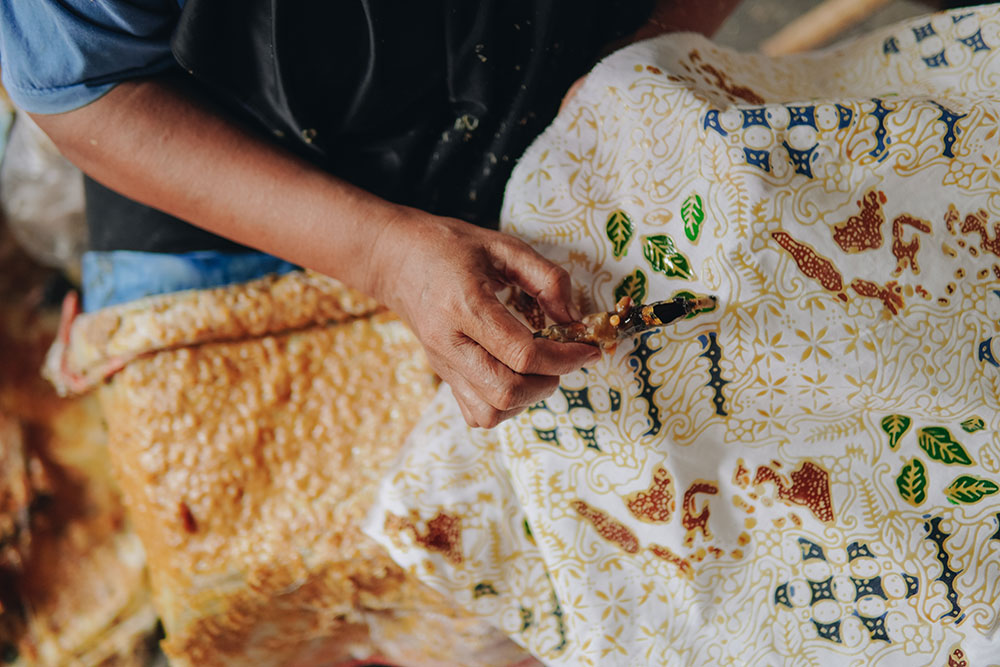
Ethical Sourcing and Fair Trade in Fashion
When you’re designing clothes, it’s not just about how they look; it’s also about how they’re made and who makes them. Ethical sourcing is all about making sure that every step of your production line, from the fabrics to the factories, is handled with care and fairness. This means working with suppliers who treat their workers well, follow safe labor practices, and don’t cut corners just to save money. A lot of UK-based brands are now being super transparent about where their materials come from, which helps build trust with customers. Choosing local suppliers or certified partners isn’t just ethical but it’s also a smart move for building a brand that people genuinely respect.
Ethical Sourcing
Ethical sourcing goes beyond simply slapping an “eco-friendly” label on your products; it’s a deeper commitment to making responsible choices at every stage of your production process. It involves selecting materials that are grown or manufactured with minimal environmental impact, like organic fabrics or recycled textiles. Ethical sourcing also means supporting suppliers and manufacturers that maintain high standards for worker rights, fair wages, and safe working environments. It’s about doing the right thing for both the planet and the people who create your designs. As a designer, you’ll want to work with companies that share your values, and certifications like OEKO-TEX or GOTS can help you identify those that meet recognized environmental and social standards.
Making ethical sourcing a priority can also mean choosing to work with smaller, local mills or manufacturers rather than large-scale operations that may prioritize profit over sustainability. In cities like London, many emerging designers are opting for local production to minimize their carbon footprint and support fair labor practices. This approach not only reduces the environmental cost of shipping materials and finished products across the globe but also builds a stronger, more transparent connection between designers, suppliers, and customers. Even small shifts like reducing overproduction or reusing leftover materials, can contribute to a more sustainable and ethical fashion ecosystem. Ultimately, ethical sourcing reflects your brand’s values and can help you build a loyal customer base that shares your commitment to responsible fashion.
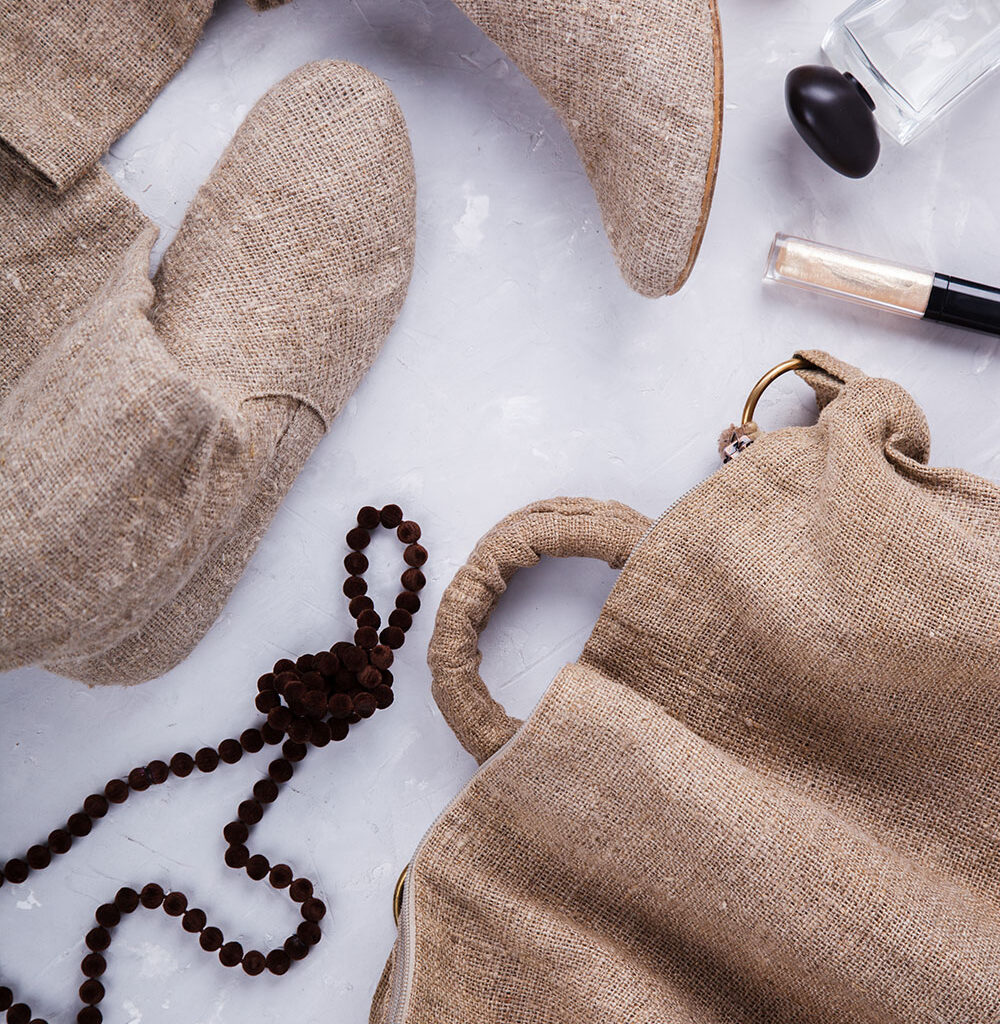
Fair Trade
Fair trade goes beyond ethical sourcing by ensuring that the individuals involved in making your garments are treated with the utmost dignity and respect. This means providing fair wages, ensuring safe working conditions, and prohibiting forced or exploitative labor. It also involves supporting community development initiatives that improve the well-being of the workers and their families. When you partner with fair trade suppliers, you are building long-term, mutually beneficial relationships that prioritize fairness and sustainability. These partnerships not only support workers but often result in higher-quality craftsmanship as well, as artisans are valued and encouraged to produce their best work.
Building your fashion brand around fair trade principles sends a powerful message to your customers. It shows that your commitment goes beyond just creating beautiful designs; it shows that you care about the people who make those designs possible. In an industry often criticized for its lack of transparency, fair trade offers a way to differentiate your brand with authenticity and integrity. Consumers today, particularly those from younger generations, are increasingly looking for brands that align with their values and prioritize social and environmental responsibility. By incorporating fair trade practices into your business model, you not only contribute to positive social change but also build a brand that resonates deeply with conscious consumers.
Reducing Waste and Implementing Zero-Waste Design
Reducing waste and implementing zero-waste design is becoming increasingly vital as the fashion industry faces growing pressure to become more sustainable. Zero-waste design focuses on creating patterns and production methods that ensure minimal fabric waste. Rather than discarding scraps, designers plan their collections so that every inch of fabric is used efficiently. For example, some designers carefully craft their patterns to make the most of the fabric’s shape and structure, ensuring no material is wasted. By rethinking how garments are created from the very beginning, zero-waste design can drastically reduce the environmental impact of fashion production.
Brands like Daniela Salazar and Phoebe English, both based in London, are excellent examples of how zero-waste principles can be successfully incorporated into high-quality fashion collections. They take a conscious approach by sourcing deadstock materials, upcycling old garments, and creatively using leftover fabric to produce their collections. Even as a beginner designer, embracing small changes, like experimenting with fabric scraps, reusing old textiles, or collaborating with local artisans, can have a significant positive impact on reducing waste in your designs. Implementing zero-waste strategies not only promotes sustainability but also showcases your commitment to creating fashion with purpose.
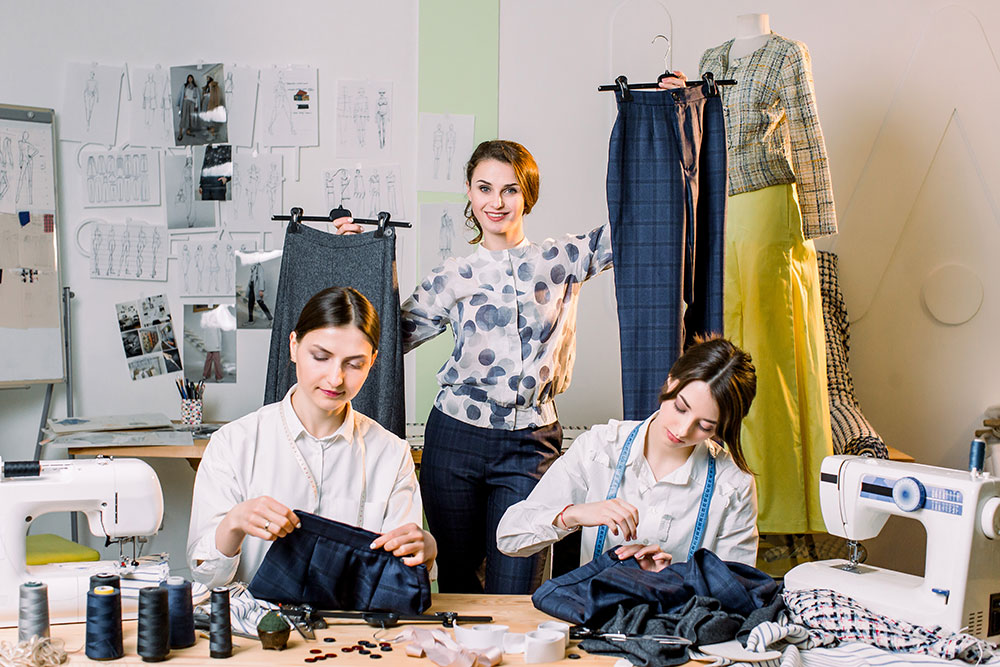
The Future of Sustainable Fashion
Sustainability in fashion isn’t just a short-term trend but it’s becoming the way forward. The fashion industry is rethinking its entire process, from how garments are made to how they’re consumed. We’re moving beyond simply choosing “eco-friendly” materials and starting to redesign the system. That means exploring ideas like clothing rentals, resale platforms, and digital fashion that reduces waste altogether. Brands are getting more experimental, offering collections that can be worn virtually, or launching pieces designed to last longer, be repaired, or recycled at the end of their life. It’s exciting to see this shift toward slowing things down and making fashion more thoughtful.
One of the most inspiring changes is the rise of next-gen materials. Designers are experimenting with alternatives like Mylo, a leather-like fabric made from mushrooms, or lab-grown materials that skip the water- and resource-heavy farming processes. These innovations are not just interesting but they’re part of a bigger movement to create fashion that’s smarter and more responsible. There’s also a lot more focus on circular design, where clothes are created with the idea that they’ll eventually be reused, recycled, or broken down, instead of ending up in landfill. These ideas might have sounded niche a few years ago, but now they’re becoming more mainstream as people realize how urgent sustainability really is.
What’s really driving this change is the new generation of shoppers and creators; people who care about the planet and expect brands to care too. There’s a growing demand for transparency, and consumers are starting to question where their clothes come from, how they’re made, and what impact they have. Social media has played a huge role in this by calling out greenwashing, sharing ethical alternatives, and making sustainability more accessible and cool. As more people choose to shop mindfully, brands are being pushed to step up and adapt. The future of fashion is looking more innovative, inclusive, and sustainable—and that’s something to be excited about if you’re just starting out in this space.

How to Incorporate Sustainability into Your Brand
Creating a brand that’s both stylish and sustainable is totally doable. It just takes some thought, intention, and consistency. You don’t need to overhaul everything at once, but starting with conscious decisions in your design and production process can make a real difference. For example, choosing eco-friendly fabrics like organic cotton or recycled materials is a great first step. You can also reduce waste by making smaller batches, using offcuts creatively, or even designing pieces that are made to last beyond one season.
Working with ethical suppliers and makers is another big part of it. That means doing a bit of research to find partners who treat their workers fairly, use safe practices, and share your values. It might take time to build those relationships, but it’s worth it in the long run. And don’t be afraid to talk about your process! Being transparent; whether it’s about your materials, your supply chain, or the challenges you’re facing, builds trust with your audience and shows that you genuinely care.
Lastly, sustainability isn’t just about the product but it’s also about your platform. You can use your voice as a designer to educate your followers, collaborate with like-minded creatives, and inspire people to buy more consciously. Sharing your journey, even the messy parts, can really help shape your brand identity. People connect with honesty and purpose, and those connections are what make a brand truly stand out.
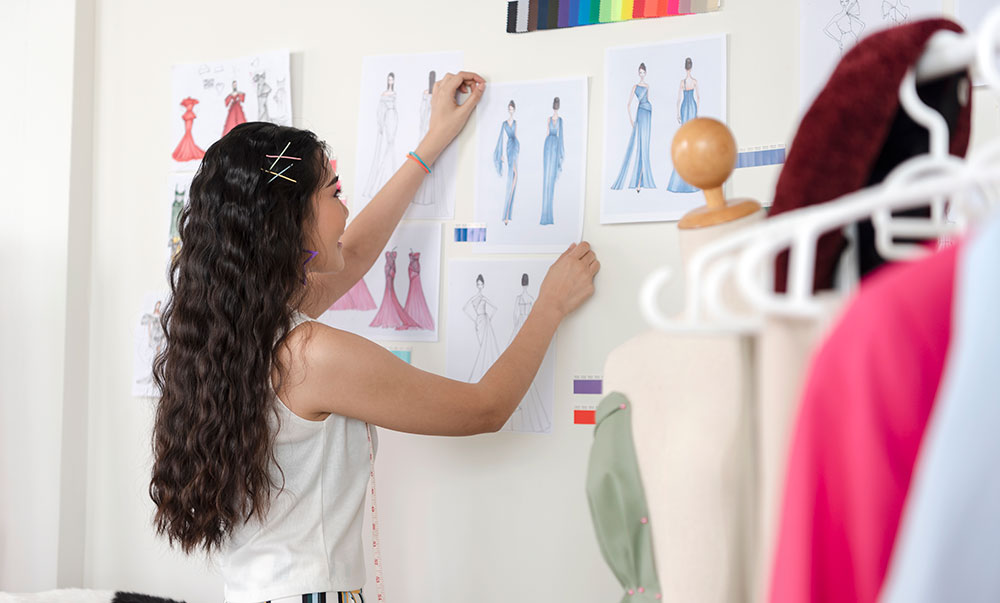
12- Preparing for a Career in Fashion Design
Preparing for a career in fashion design involves more than just honing your creative skills; it’s about turning your passion and ideas into a real, sustainable career. Whether you dream of starting your own label or working for a well-established fashion brand, the journey requires a strong foundation, clear mindset, and strategic planning. In this section, we will explore essential steps, including how to land your first job in fashion design, weigh the pros and cons of freelancing versus working for a fashion brand, and how to build a compelling resume and cover letter. We’ll also look at launching your own fashion label, covering everything from business planning to branding. Finally, we’ll dive into how to stay inspired and keep growing as a designer to ensure that your creativity and passion continue to flourish as you navigate the fashion industry.
How to Land Your First Job in Fashion Design
Breaking into the fashion world can be intimidating, but remember, everyone starts somewhere. The key to landing your first fashion design job is having a strong portfolio that clearly showcases your design skills and personal style. Whether it’s sketches, completed garments, or digital designs, your portfolio should highlight your best work and demonstrate your creativity. In addition to your portfolio, your resume should include any relevant experience, whether it’s internships, freelance projects, or part-time jobs, even if they were self-initiated. Employers want to see that you’ve put effort into developing your skills and have some practical experience under your belt.
Networking is also essential in fashion. Don’t be afraid to reach out to industry professionals, attend local events or fashion shows, and even join online groups or forums where designers hang out. Making connections with people in the industry can open doors to opportunities that aren’t always advertised. Websites like Fashion Workie and The Dots are great platforms for finding entry-level positions, internships, or freelance gigs. You can also consider attending networking events and meetups for fashion professionals. Building relationships with others in the fashion world not only increases your chances of finding a job but also helps you learn and grow as a designer.
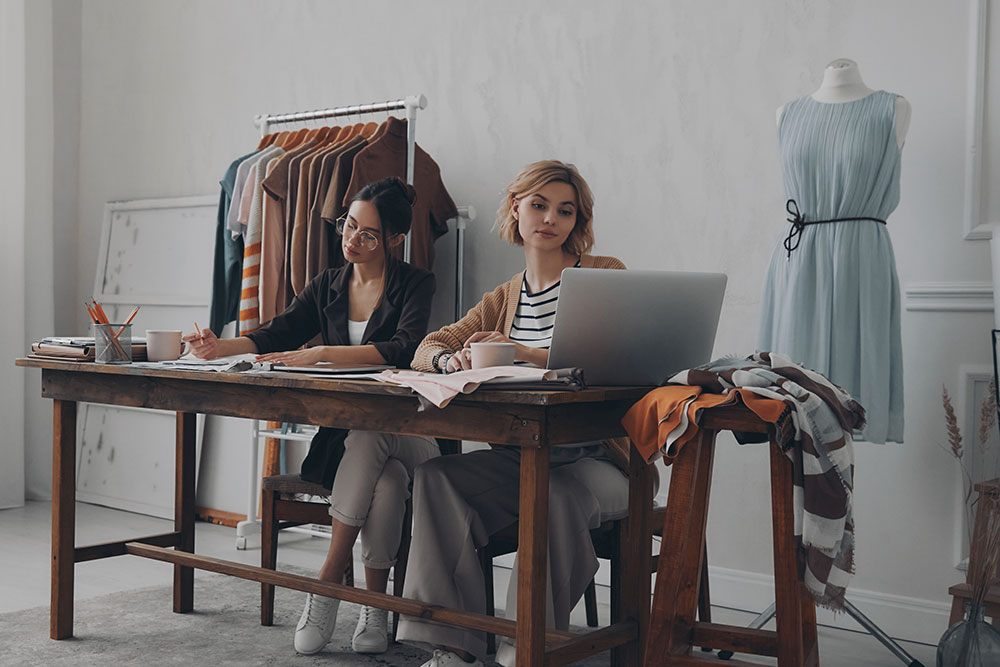
Freelancing vs. Working for a Fashion Brand
Freelancing in the fashion industry offers a unique level of flexibility that many young designers find appealing. As a freelancer, you have the freedom to pick your own projects, set your own hours, and work at your own pace. This is especially beneficial if you’re still figuring out your design aesthetic or business direction. It’s a great way to gain hands-on experience, build a diverse portfolio, and start earning money early on. Many freelance designers begin by working on platforms like Upwork, Fiverr, or even promoting their services through social media like Instagram. By building a personal brand and connecting with small businesses or local fashion startups, freelancers can find creative projects that align with their personal style.
However, freelancing also comes with its challenges. As a solo entrepreneur, you’re responsible for finding your own clients, setting rates, and managing all aspects of your business. This means handling the administrative side of things, like contracts, invoicing, and marketing, which can sometimes feel overwhelming, especially for beginners. It’s essential to stay organized and disciplined to manage your time effectively and keep projects on track. While it’s possible to earn a good income, freelancers often face fluctuations in workload, which requires careful financial planning. But if you’re proactive and stay consistent with your work, freelancing can be a great way to build a name for yourself and gain valuable industry experience.
On the other hand, working for a fashion brand offers more structure and financial stability. Many designers start their careers working in-house at fashion companies, where they receive steady pay and benefits. This setup allows you to focus more on design and creative work, rather than the administrative tasks involved in freelancing. Working for a brand can help you learn the ropes of the industry by collaborating with other professionals like pattern makers, textile specialists, and marketing teams. You’ll gain valuable insights into the inner workings of a fashion company, from production to retail, and have the opportunity to contribute to large-scale projects that impact the brand’s overall direction.
Being part of a fashion brand also provides networking opportunities and career advancement that may be harder to achieve as a freelancer. Many designers start as interns or assistants, gaining experience and connections that can lead to higher-level positions over time. While entry-level roles might not feel glamorous, they can offer a foot in the door and help you build the skills needed to eventually take on more responsibility. Many London-based brands offer internships or junior design roles that can develop into full-time positions if you demonstrate your talent and commitment. In a brand environment, you’ll receive regular feedback from experienced professionals, helping you improve your craft and grow faster in the industry.

How to Build a Fashion Design Resume and Cover Letter
Building a fashion design resume and cover letter is essential for making a strong impression when applying for jobs or internships in the fashion industry. Your resume should showcase your relevant skills, experiences, and creative work in a clear, concise format. Include details like internships, freelance projects, fashion shows, or exhibitions you’ve participated in, and highlight technical skills like proficiency in design software such as Adobe Illustrator or CLO 3D. When writing your cover letter, focus on conveying your passion for fashion, why you’re interested in the specific role or company, and how your unique skills and experiences make you a great fit. Both documents should reflect your creativity and attention to detail while maintaining a professional tone to catch the eye of hiring managers. Make sure they work together to tell a compelling story about who you are as a designer.
Fashion Design Resume
Your fashion design resume should be like a mini portfolio, offering a snapshot of your experience, skills, and creativity all in one page. Start by including any fashion-related work, such as internships, freelance projects, personal designs, or even styling your friends for events. Highlight your technical skills, like proficiency in Illustrator, CLO 3D, or any other relevant design software, as this shows you’re ready for the digital side of the industry. Don’t forget to mention any significant experiences, such as participating in fashion shows, pop-ups, or exhibitions, as these can demonstrate your exposure and engagement with the industry.
When designing your resume, make sure the formatting is clean and easy to read, allowing the reader to quickly scan through the most important details. However, don’t be afraid to inject a little personality into it, whether through a splash of color or a unique layout. A creative, yet professional resume will catch the eye of hiring managers, showing them that you not only have the necessary skills but also the creativity to stand out in the fashion world. Just make sure it still looks polished and doesn’t overwhelm the viewer with too much flair.

Fashion Design Cover letter
A fashion design cover letter is your opportunity to showcase your personality and passion for the fashion industry. Rather than simply repeating what’s on your resume, it allows you to tell a compelling story about who you are and why you’re a great fit for the role you’re applying for. Start by addressing the specific company and expressing why you admire their work, whether it’s their innovative designs, brand philosophy, or industry impact. This shows that you’ve done your research and are genuinely interested in the company, rather than just sending out generic applications. It’s important to highlight how your own experiences, skills, and design aesthetic align with their values and vision, helping them see how you can contribute to their team.
In your cover letter, it’s key to strike a balance between professionalism and personality. While the content should remain respectful and business-like, your enthusiasm for the role should shine through. Focus on your unique attributes and what you can bring to the table. Talk about how your experiences, whether in school, internships, or personal projects, have prepared you for this opportunity and why you’re excited about it. Keep it concise; one page is usually enough and make sure it’s error-free. A well-crafted, thoughtful cover letter is a great way to make a lasting impression and set yourself apart from other candidates.
Launching Your Own Fashion Label – What You Need to Know
Launching your own fashion label is definitely an exciting journey, but it’s also a big commitment. It’s more than just creating beautiful designs as there’s a lot of behind-the-scenes work that goes into building a successful fashion brand. First, you’ll need to define your brand identity; this includes understanding your target audience, what sets your brand apart, and how you want your designs to resonate in the market. Having a clear vision will guide all aspects of your label, from your design aesthetic to your marketing strategy. Along with creativity, you’ll also need a solid business plan that includes your pricing strategy, production process, and long-term goals.
When starting out, it’s often a good idea to keep things small with a capsule collection or made-to-order pieces. This allows you to test the market, gauge customer interest, and refine your designs before scaling up. Don’t forget that legal and financial elements are equally important. Registering your brand, setting up your business structure, and figuring out your budget are all crucial steps. As you grow, you may find it necessary to build a small team to help with things like production, marketing, and logistics. While starting a fashion label takes a lot of hard work and dedication, with the right foundation and a strong sense of purpose, you can turn your vision into a real fashion business.
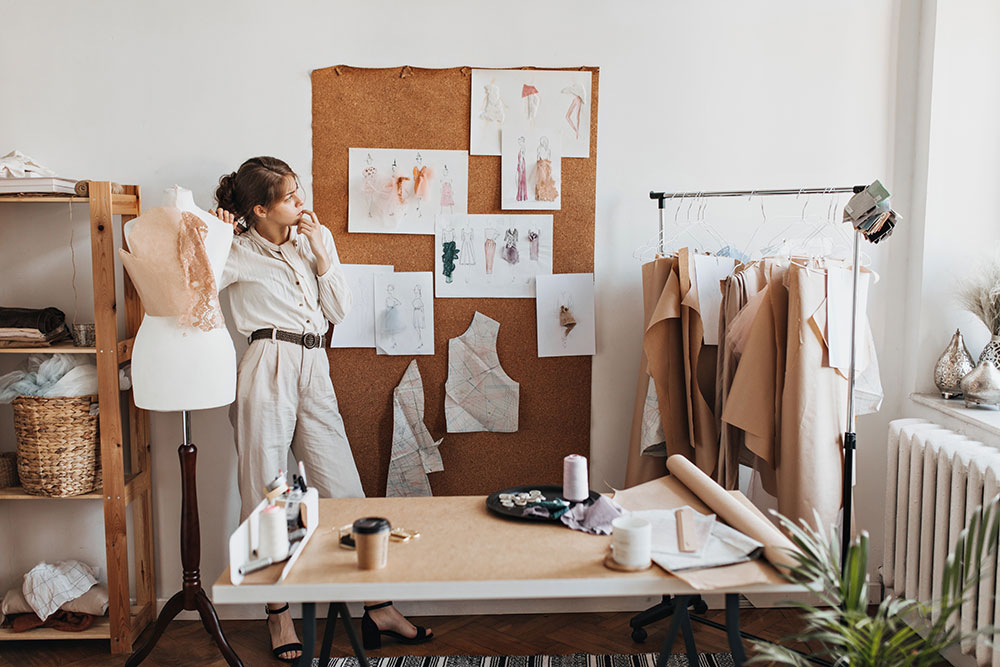
How to Stay Inspired and Keep Growing as a Designer
As a designer, it’s easy to hit a creative block, but staying inspired and curious is key to keeping your passion alive. Inspiration can come from the most unexpected places; whether it’s visiting an art exhibition, following other designers on social media, exploring new cultures, or simply observing everyday life around you. Sometimes, stepping outside your comfort zone and experimenting with new techniques or styles can spark fresh ideas. It’s important to keep pushing your boundaries and staying open to new influences to fuel your creativity.
In addition to staying curious, surrounding yourself with supportive and like-minded people can help keep your creative energy flowing. Whether it’s fellow designers, mentors, or online communities, engaging with others who inspire and challenge you is essential for growth. Remember, growth as a designer takes time, and it’s important to be patient with yourself throughout the process. Keep refining your unique voice, learning from your experiences, and embracing new opportunities. By staying passionate and open to new ideas, you’ll continue to evolve and thrive as a designer.
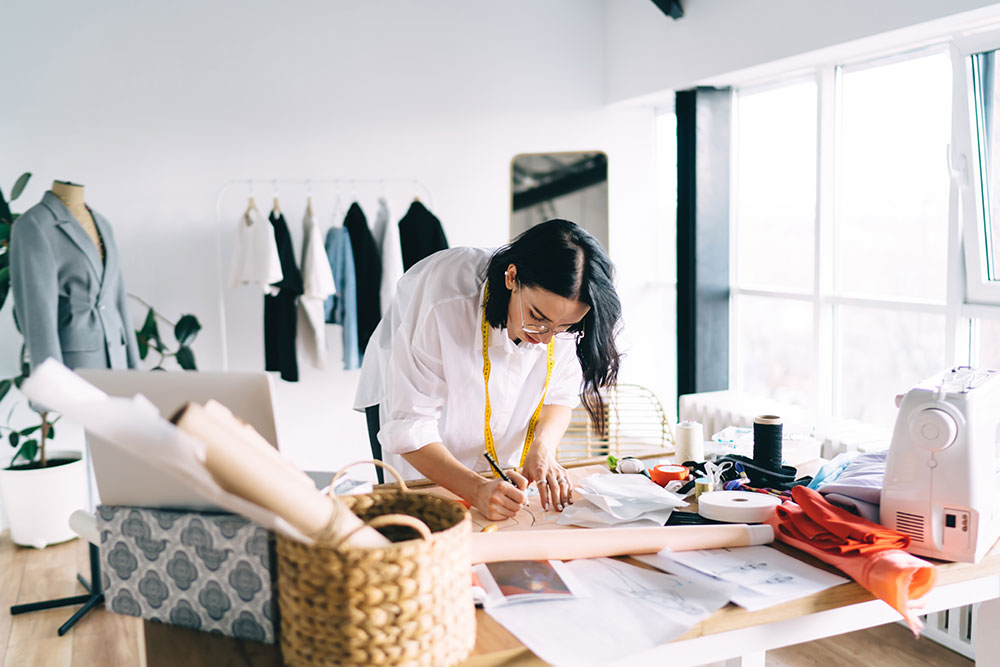
13- Conclusion
Starting your journey in fashion design can feel overwhelming, but breaking it down into steps makes it way more doable. Whether you’re sketching your first ideas, learning to sew, or figuring out how to build your brand; every part of the process matters. There’s no single right way to get into fashion; it’s about finding what works for you. Maybe that means studying at a top school, maybe it’s learning from YouTube and trial and error. The key is to stay curious, keep practicing, and surround yourself with people and things that inspire you. Fashion is always changing, and there’s room for every kind of voice and vision. So take that first step, start creating, and trust that your style will grow with you. Who knows? Your first sketch could turn into something big. For a quick overview, you can also watch the 10-minute video linked below, which summarizes all the key points from this article.
Continue Reading
- How to Get Started in Fashion Design- A Beginner’s Guide / Part 1
- How to Get Started in Fashion Design- A Beginner’s Guide / Part 2
- How to Get Started in Fashion Design- A Beginner’s Guide / Part 3
- How to Get Started in Fashion Design- A Beginner’s Guide / Part 4
Written By: Muskaan Khojestagan
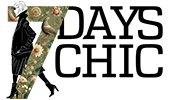
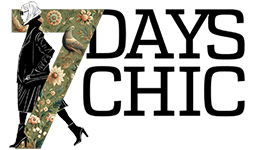
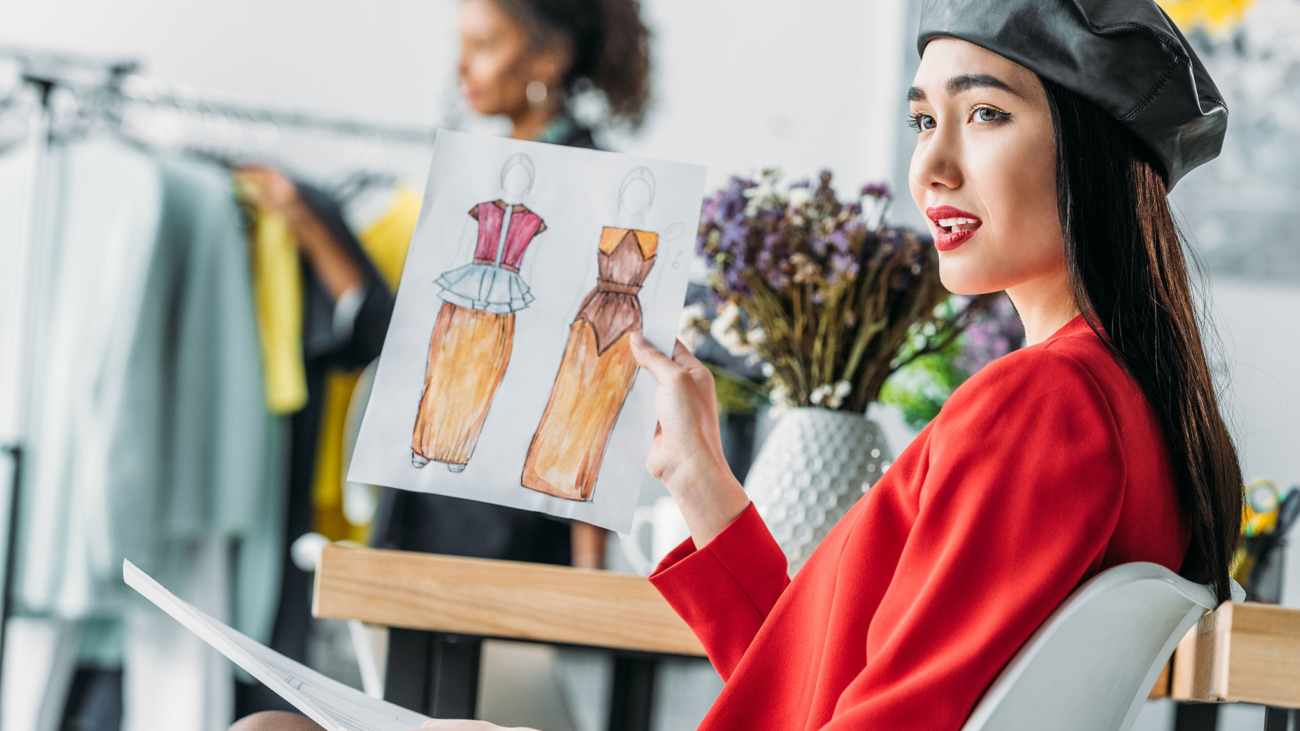
Add a Comment